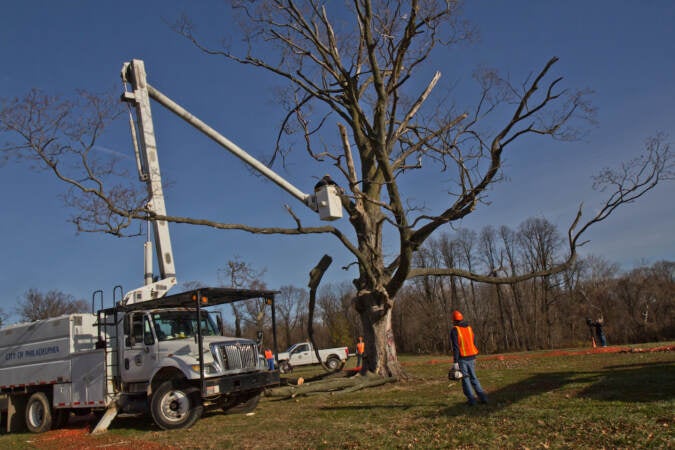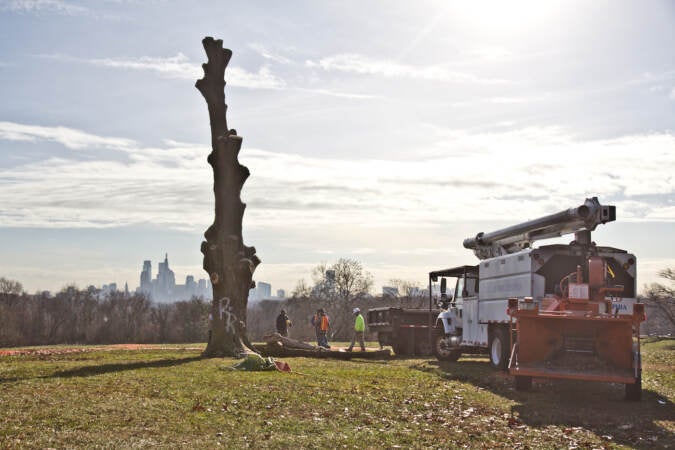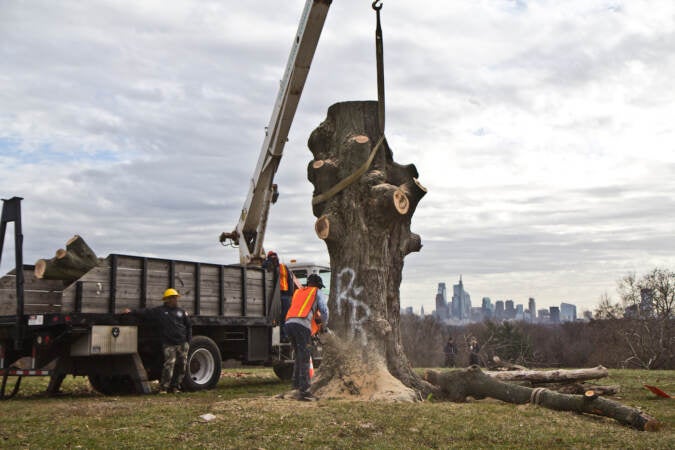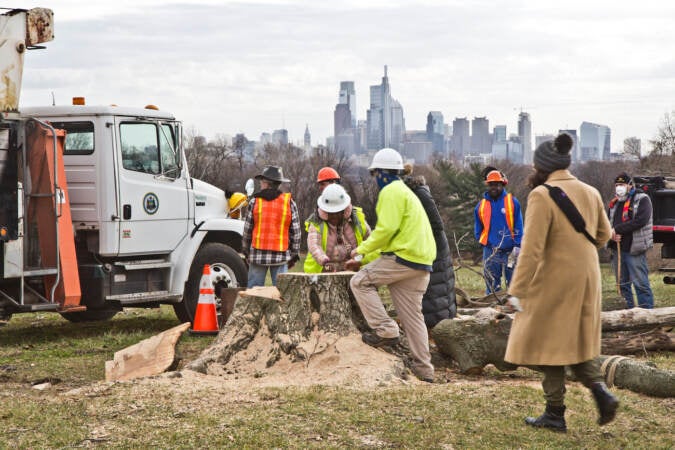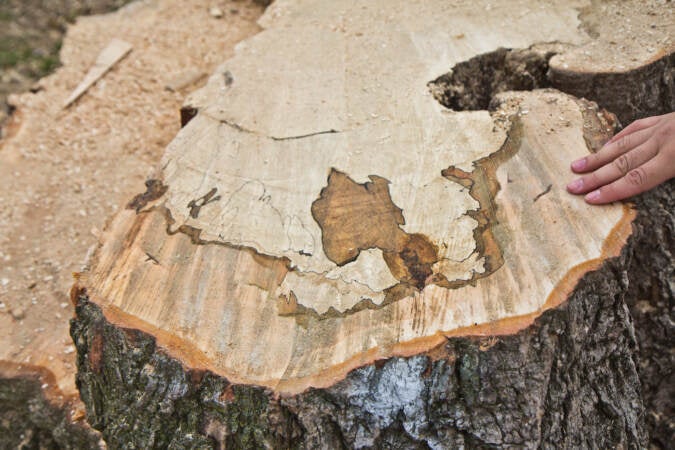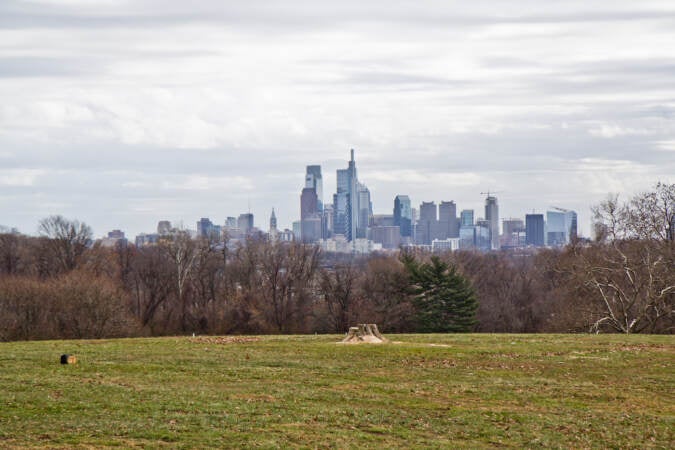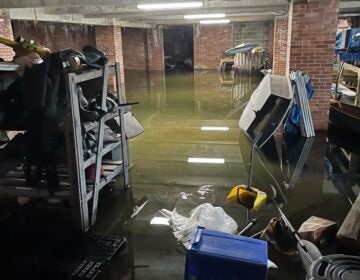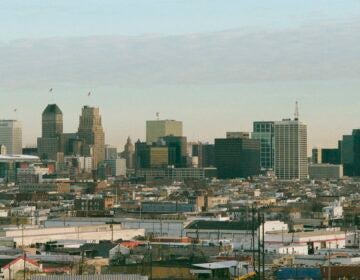Fairmount Park’s iconic maple tree is gone. Arborists cite climate change
Officials suspect a few things are behind the tree’s decline: its age, compaction around its roots where people walked around and had picnics, and climate change.
Listen 4:13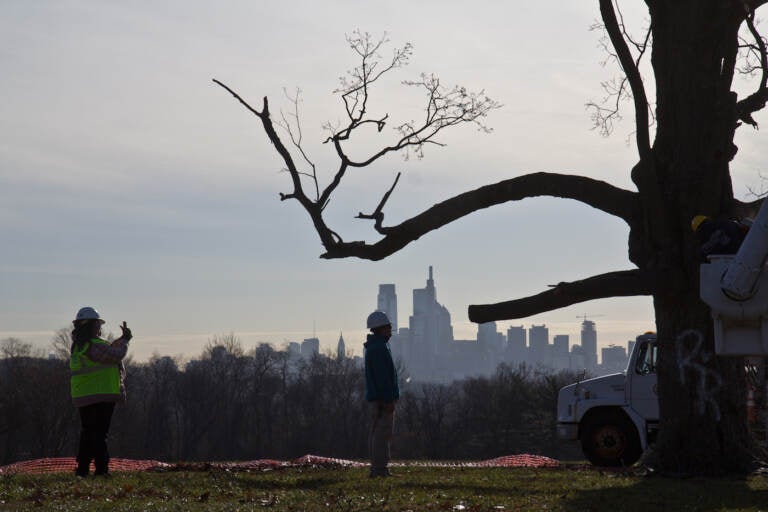
Philadelphia Parks and Rec work to remove the Belmont Plateau’s iconic sugar maple tree on the morning of Dec. 15, 2021. (Kimberly Paynter/WHYY)
The huge sugar maple that crowned the Belmont Plateau in Fairmount Park for almost a century is no more. With chainsaws and truck-mounted cranes, a crew of city tree maintenance workers cut it down, piece by piece, on Wednesday.
“I’ve been coming to this tree as an iconic overlook of the city for over 20 years,” said Roger Wing, of Powelton Village, who stopped by Wednesday morning to watch the tree come down. “[I] brought my kids here sledding and grew up under the shade of sugar maple trees — so it’s always been a really special tree to me.”
The sugar maple, somewhere around 80 to 100 years old, has appeared in numerous photos of the city skyline. The hill it sits on is a popular sledding spot, and its branches have shaded proposals and weddings. But the once-glorious tree looked ragged in its final days. Many of its limbs were dead and broken, and graffiti covered one side of its trunk.
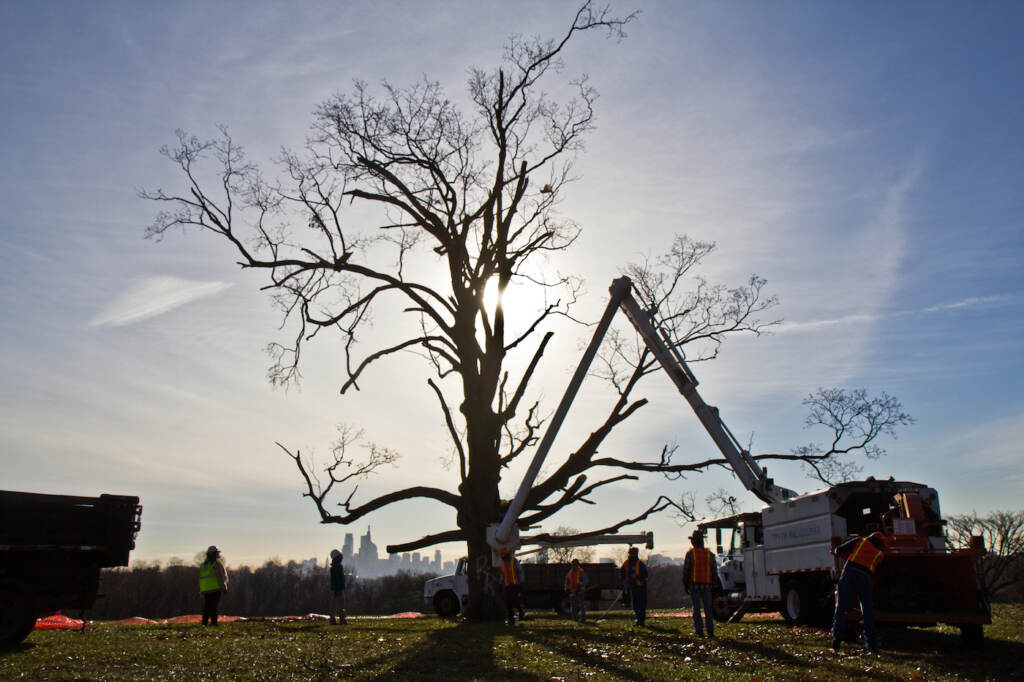
“While it was a very sad and difficult decision, we are here today because the sugar maple tree behind us is in decline,” said Kathryn Ott Lovell, commissioner of Philadelphia Parks & Recreation, before the tree-cutting began.
The maple became a hazard to park visitors, said Lori Hayes, the city’s director of urban forestry.
“We can’t say, ‘Oh, leave it’ — then the sledders come and the tree comes [down],” she said.
Officials suspect a few things are behind the tree’s decline: its age, compaction around its roots where people walked around and had picnics, and — you guessed it — climate change.
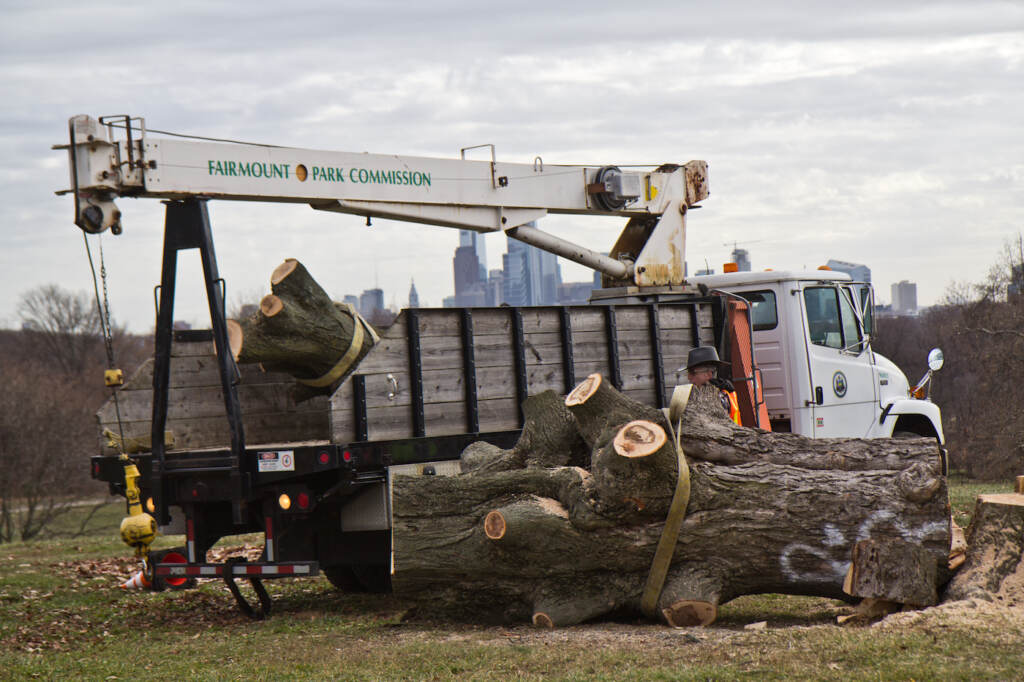
“We’ve noticed that sugar maples are really declining around here,” said William Cullina, executive director of the University of Pennsylvania’s Morris Arboretum. “There’s no doubt, looking at the trees that we’ve been growing at the Morris Arboretum… that there’s trees that used to do well here that no longer do well because it’s too hot. There’s others that used to not grow well here, and now they do really well.”
Sugar maples are considered highly adaptable trees. But Cullina points out that in Philly, sugar maples are already at one of the edges of their native range. He said just like humans, trees have a specific temperature range where their metabolism works well.
“High temperature is almost like it’s running a fever all the time. And what happens is that it ends up burning up more energy than it’s making through photosynthesis,” Cullina said. “It just kind of burns itself out.”
Philly’s summers have gotten 3 degrees Fahrenheit hotter since 1970, and winters have warmed even faster.
Heat is particularly hard for trees to deal with when conditions are also dry, said Igor Lacan, a cooperative extension advisor with the University of California who specializes in urban forestry.
“Trees use water to cool themselves, just like we humans use water to cool ourselves,” he said. “Typically during periods of very high heat, trees are also stressed for water. … Aside from that, way before we get to that stage, there’s the issue of trees not having enough water to support the increased rate of photosynthesis.”
Other climate-linked threats — like wildfires, rising seas or even pests and diseases — can also hurt trees. But different species respond in different ways to changing temperature and precipitation patterns.
Cullina suspects climate change might be behind the declines he’s noticing in other species in Philly — northern red oaks, European beeches, and blue spruces.
Since trees live decades or even centuries, Philly needs to plant trees appropriate not just for today’s climate, but for the climate of the future. Staff at the Morris Arboretum are already working to identify which species those will be.
“Primarily, we’re looking for species that are a little bit south of us,” Cullina said. “In the Carolinas, Virginia, that area — for native species, … that have more heat tolerance.”
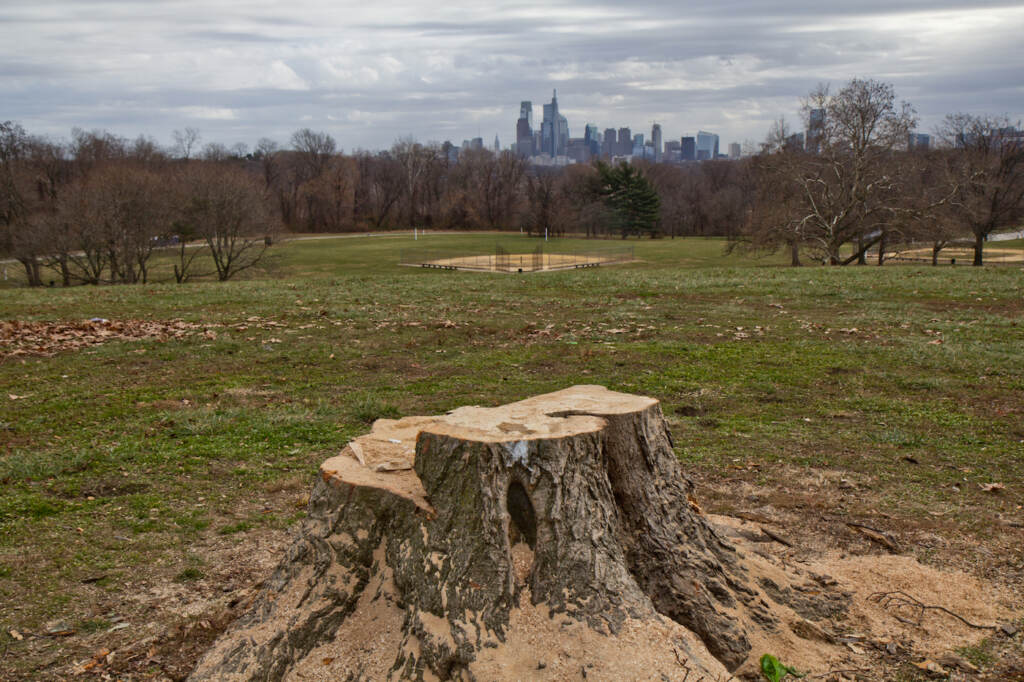
Cullina said his team is testing out trees including skinny-leaved willow oaks, swamp-loving bald cypress, and even Mexico’s cloud forest sugar maples.
The urban forestry plan the city plans to release in early 2022 will recommend updating lists of approved street and park trees to reflect a warming world.
Roger Wing, the sculptor from Powelton Village — is still mourning the Belmont sugar maple, but plans to help the tree’s spirit live on.
“I came out here and said my goodbyes two weeks ago and shed a few tears then,” he said. “Now, I’m just trying to look to the future and writing the next chapter for this tree.”
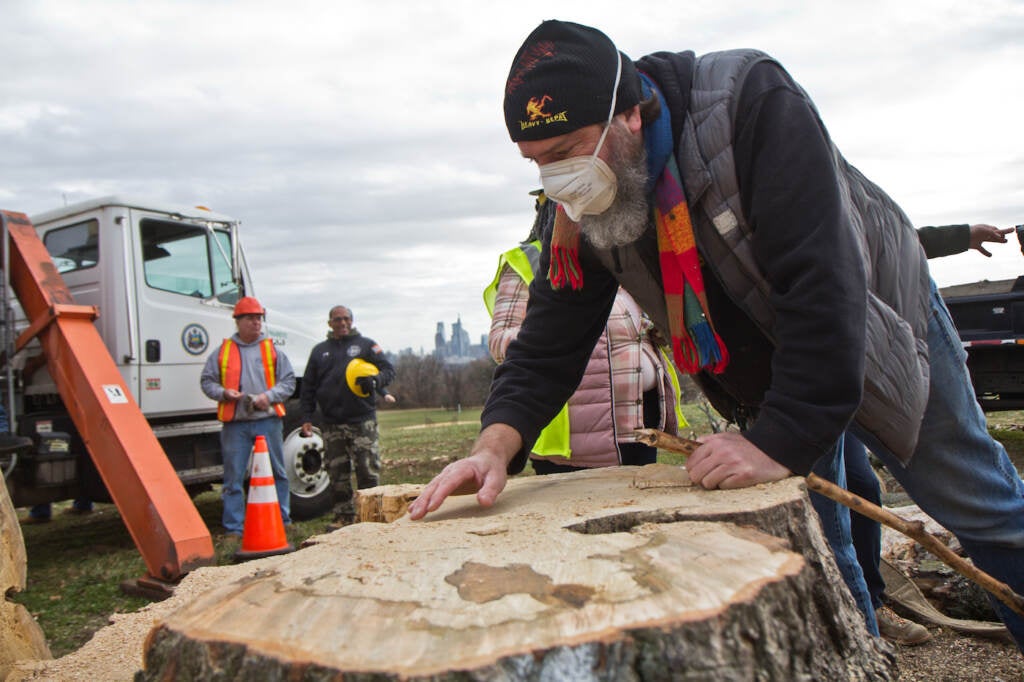
The Belmont Plateau’s next chapter will include three black gum trees, which city officials will plant around the spot where the sugar maple stood. They hope the new trees will be more resilient to climate change — and promise they’ll look great in the fall.

Saturdays just got more interesting.
WHYY is your source for fact-based, in-depth journalism and information. As a nonprofit organization, we rely on financial support from readers like you. Please give today.





